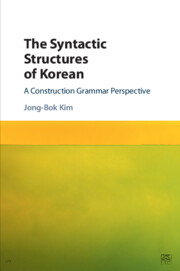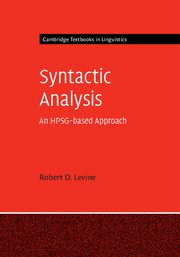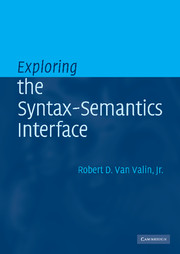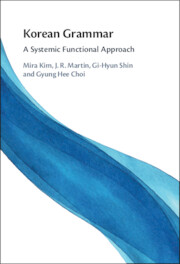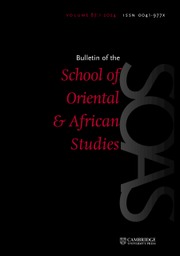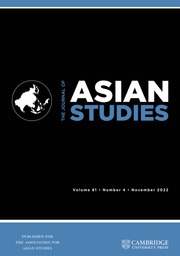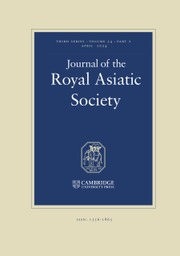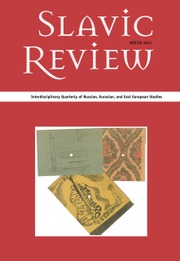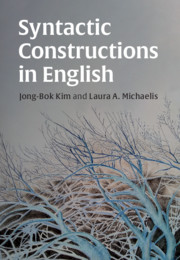The Syntactic Structures of Korean
Covering both core and peripheral phenomena, The Syntactic Structures of Korean is a concrete and precise grammar of the language. Based on the framework of Sign-based Construction Grammar, it provides a grammar of Korean which is computationally implementable and cognitively viable. Remarkably broad, yet in-depth, it is an outstanding analysis of Korean syntax and semantics which will be welcomed by those working in linguistics and the Korean language.
- Offers a remarkably broad yet in-depth coverage of popular contemporary topics in Korean syntax and semantics
- Provides a computationally feasible analysis of major syntactic phenomena in Korean
- Proposes a construction grammar-based account of Korean syntactic structures
Product details
December 2022Paperback
9781107503250
359 pages
228 × 151 × 20 mm
0.55kg
3 b/w illus. 7 tables
Available
Table of Contents
- 1. Theoretical foundations
- 1.1 Derivational vs constraint-based views
- 1.2 Linguistic signs and feature structures
- 1.3 Constructions and multiple inheritance hierarchy
- 1.4 Korean phrase structure grammar
- 1.5 Conclusion
- 2. Noun phrases
- 2.1 Basic properties
- 2.2 Basic ordering restrictions
- 2.3 Simple NP structures
- 2.4 NPs with phrasal determinants
- 2.5 Conclusion
- 3. Case system
- 3.1 Two basic issues
- 3.2 Forming case-marked nominal expressions
- 3.3 A construction-based case assignment system
- 3.4 Complex case phenomena and predictions
- 3.5 Case assignments in the auxiliary constructions
- 3.6 Case assignments to the non-nominal expression
- 3.7 Conclusion
- 4. Auxiliary and complex predicate constructions
- 4.1 Types of auxiliary verbs and morphosyntactic properties
- 4.2 Three possible analyses
- 4.3 Syntactic properties of complex predicates
- 4.4 A construction-based analysis
- 4.5 Conclusion
- 5. Gerundive phrases and mixed categories
- 5.1 Verbal and nominal properties
- 5.2 Derivational analyses
- 5.3 Inflectional treatment of the gerundive nominalizers
- 5.4 A mixed-category analysis
- 5.5 Consequences and further issues
- 5.6 Conclusion
- 6. Verbal nouns and light verb construction
- 6.1 Basic properties
- 6.2 On the properties of the light verb
- 6.3 On the mixed properties of the verbal nouns
- 6.4 Mixed properties within a multiple inheritance system
- 6.5 Argument composition and syntactic structures
- 6.6 Dissolving variations
- 6.7 Conclusion
- 7. Serial verb construction
- 7.1 Serial verbs and general properties
- 7.2 Grammatical properties of the SVCs
- 7.3 Types of serial verb constructions
- 7.4 A construction-based view
- 7.5 Conclusion
- 8. Negation and related phenomena
- 8.1 Short form and long form negation
- 8.2 Reviews on the derivational view
- 8.3 Short form negation
- 8.4 Long form negation
- 8.5 Implications of the analysis
- 8.6 Conclusion
- 9. Coordination
- 9.1 Two main types of nominal and verbal coordination
- 9.2 Lexical properties of the coordinators
- 9.3 More on the syntactic aspects
- 9.4 Symmetric and asymmetric verbal coordination
- 9.5 Conclusion
- 10. Passive constructions
- 10.1 Lexical vs syntactic passive
- 10.2 Auxiliary syntactic passive
- 10.3 A construction-based analysis
- 10.4 Light-verb syntactic passive
- 10.5 Inchoative and stative pseudo syntactic passive
- 10.6 Conclusion
- 11. Wh-questions
- 11.1 Dependency between Wh-question and Q-particle
- 11.2 Wh-questions and indefiniteness
- 11.3 A construction-based analysis
- 11.4 Key predictions
- 11.5 Conclusion
- 12. Topic and focus constructions
- 12.1 Topic constructions
- 12.2 Encoding focus
- 12.3 Focus constructions
- 12.4 Conclusion
- 13. Relative clause constructions
- 13.1 Some key properties
- 13.2 Morpho-syntax of Korean relatives
- 13.3 Standard relative clauses: externally headed
- 13.4 Double relative clauses
- 13.5 Internally headed relative clauses
- 13.6 Pseudo-relative clauses
- 13.7 Concluding remarks
- 14. Honorification
- 14.1 Basic properties of honorific agreement
- 14.2 Honorification in a constraint-based grammar
- 14.3 Conclusion.

